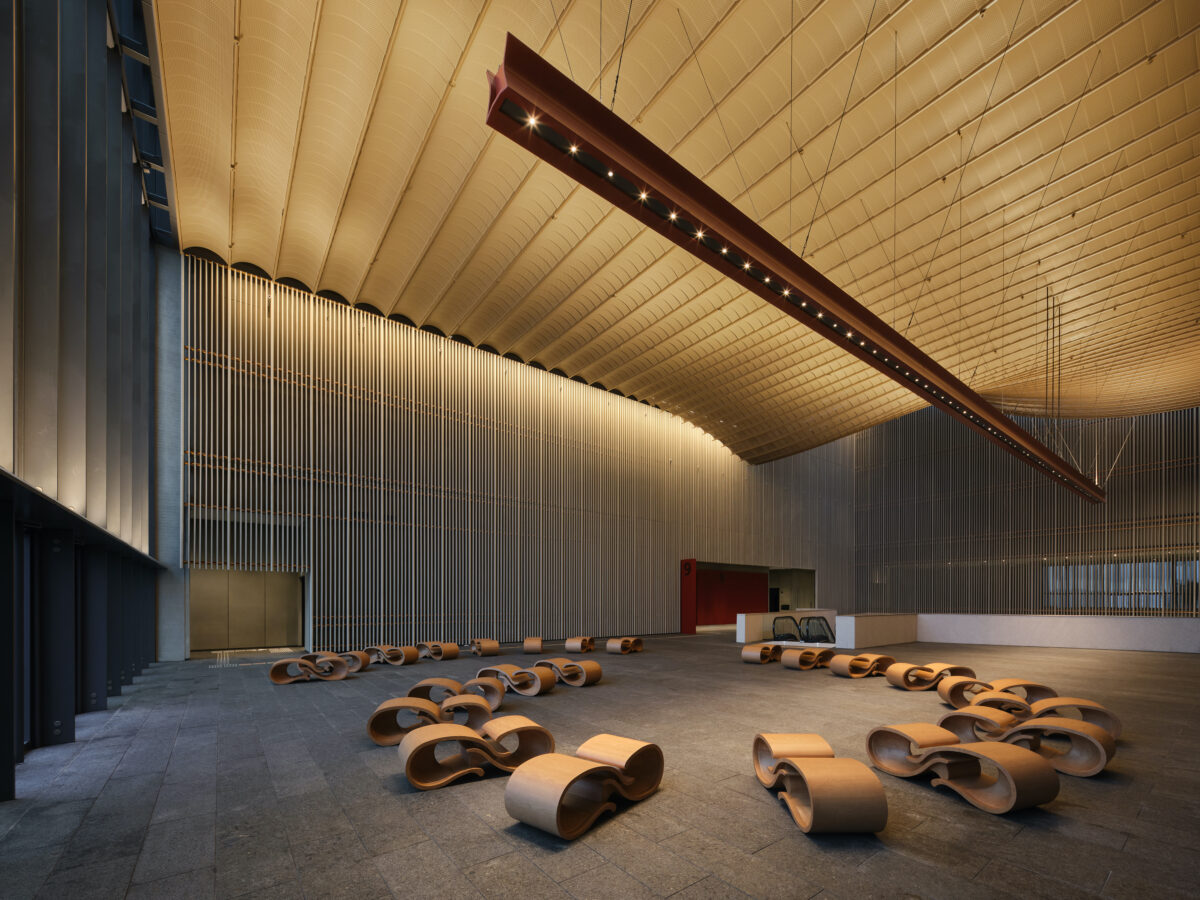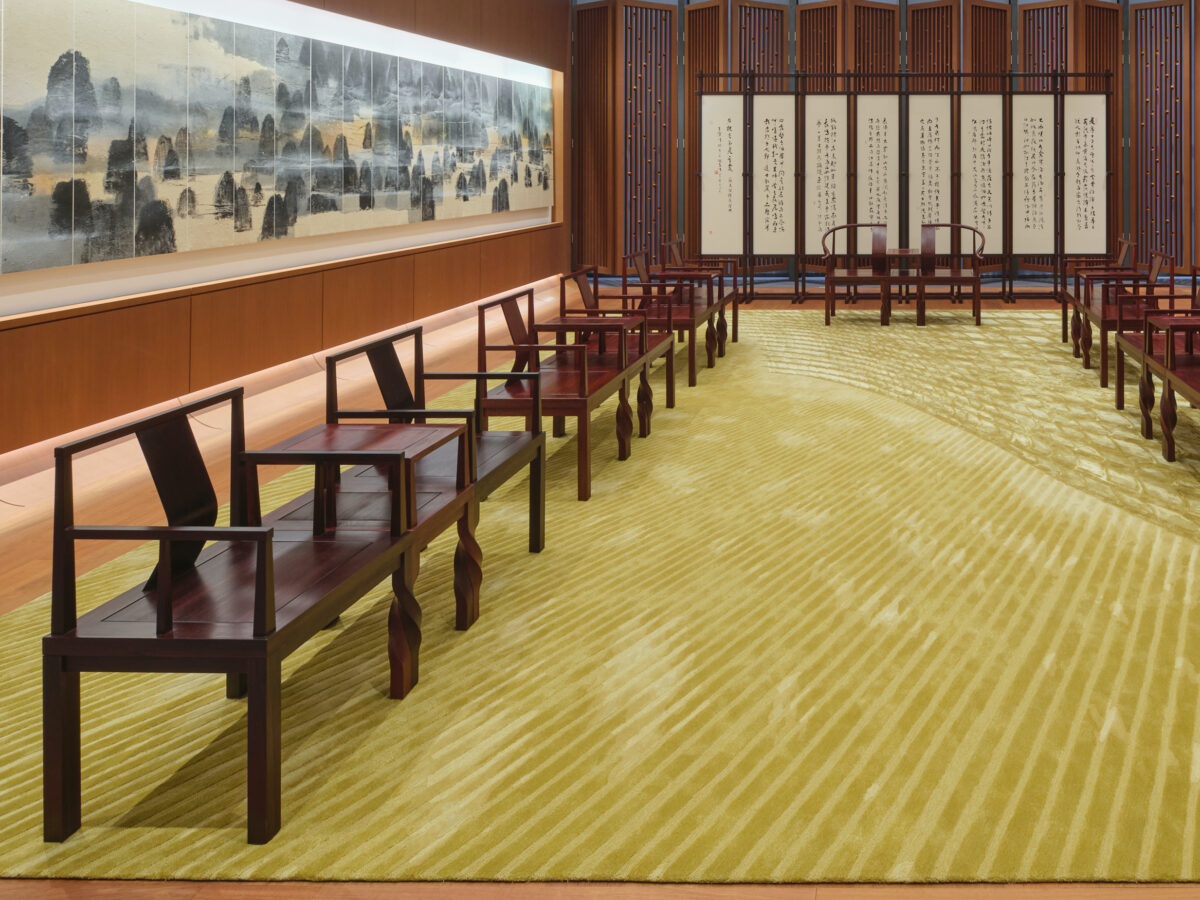Architect and designer André Fu was tasked with creating three site specific commissions including a major installation of modular seating

This month saw the much anticipated opening of the Hong Kong Palace Museum, the latest addition to the city’s rich arts and cultural offering. Located at the western tip of the West Kowloon Cultural District and adopting an innovative curatorial approach, the museum presents over 900 priceless treasures.
Architect and designer André Fu was tasked with creating three site specific commissions for the new museum including a tapestry for the auditorium entrance; an artisan floor rug for the VIP room; and a major installation of modular seating for the public atrium spaces.
The internationally acclaimed design studio boasts an extensive portfolio of projects throughout Asia and Europe, and continuously bridges the gap between cultures. Fu has designed interiors for major hotels and restaurants around the world including the St Regis.

Inspired by the museum’s punctuation of light that perforates through the vast cascading ceiling installation into the main atrium, Fu embarked on visual research into cultural phenomena that conveys a sense of harmonious rhythm.
From the interlocking vignette of traditional Chinese roof tiles, to the movement of synchronised dancers, to the fluid tempo of ink-painted brushstrokes, the play of light and shadow serves as a visual metaphor for Fu’s desire to convey a sense of cultural exchange and dialogue.
As such, he created “Eternal Links”, two public seating installations meticulously hand-crafted from Chinese oak in the form of 2 curvilinear tiles, as well as “The Convergence”, a wall-hung tapestry for the Auditorium entrance, and a vast floor rug for the VIP room. Each piece acts as a metaphor for the interwoven cultural heritage behind the museum’s vision.

‘Creating these pieces for the museum was a unique opportunity to incorporate the various contextual facets of heritage, culture, and conversation at play,’ says Fu.
‘By invoking a sense of movement in each work, I wanted to reflect the exchange of ideas that takes place in a cultural institution of this calibre while simultaneously honouring designs of the past.’
He continues, ‘Each piece tells a narrative of history and technique by blending the customary with the contemporary, creating a visual representation of the evolution of Chinese craft.’
Photography courtesy of André Fu Studio
Get a curated collection of design and architecture news in your inbox by signing up to our ICON Weekly newsletter


















